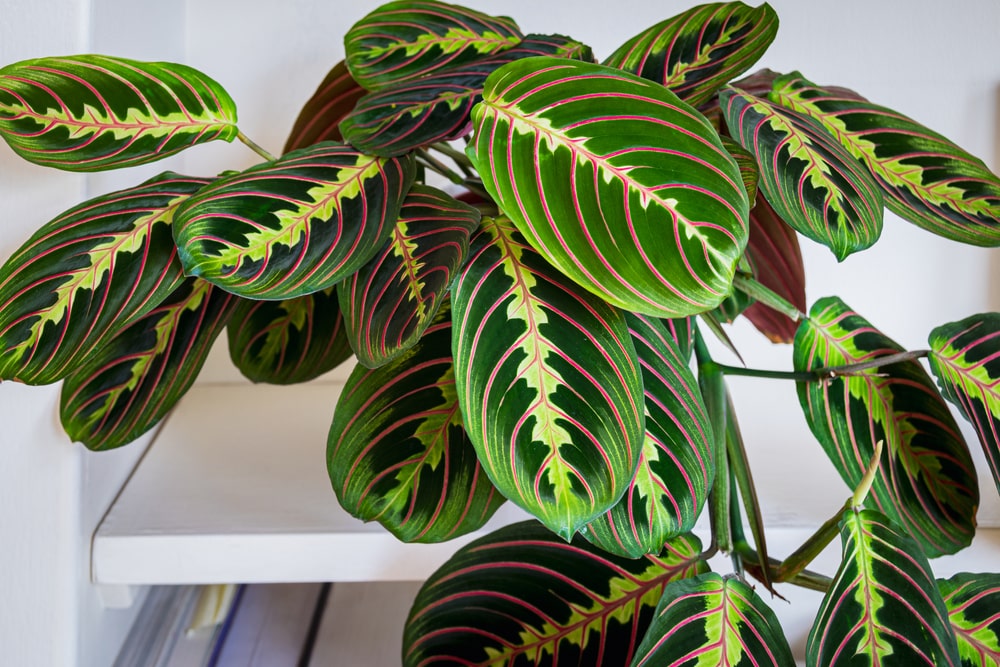FEBRUARY IS HOUSEPLANT MONTH AT THE GREAT BIG GREENHOUSE
In order to support FEBRUARY IS HOUSEPLANT MONTH I decided to step out of my comfort zone with my weekly blog and highlight a very popular tropical plant—the Prayer Plant.
The Prayer plant is a member of the Marantaceae family, which also includes the beautifully colored and patterned leaves of the Calathea. A ground cover in its native home of Brazil, the Prayer plant (Maranta leuconeura) makes an attractive hanging basket or potted plant.
The Prayer plant gets its name because of the plant’s habit of folding its leaves upward at night (or in very low light). Scientists do not know why the plant does this, but several species—including the Shamrock—also fold their leaves, either up or down, in reaction to light levels. In very high light levels, the leaves of the Prayer plant can become faded, losing much of their variegation.
Varieties
There are several varieties of Maranta available, the most common being Maranta leuconeura, with medium green leaves sporting darker green patches between the veins. Maranta leuconeura erythrophylla, sometimes called Red Prayer Plant, has showy red veins against dark velvety olive green leaves, silvery-green along the center. The Black Prayer Plant, Maranta leuconeura ‘Massangeana’, is harder to find but is quite beautiful.
How to Care for a Prayer Plant
Prayer plants need warm temperatures (protect from cold drafts), bright indirect light (avoid mid-day to afternoon sun), and even moisture in summer, slightly drier in winter. Use day-old water to prevent soluble salt damage, and provide adequate drainage—never let the roots stand in water.
Fertilize regularly March through September, with a general-purpose house plant fertilizer, following the application rates on the label. They prefer moderate to higher humidity and should be pruned once or twice a year to encourage fullness. Brown edges or tips can result from drought or cold temperatures. Prayer plants are shallow-rooted, so they perform best in shallow, rather than deep pots. Start new plants by division. Maranta is non-toxic and, therefore, safer around small children and pets.
Come see us at the Great Big Greenhouse. We pride ourselves on our large, extensive houseplant selection and we have a very knowledgeable staff to help you make the right choice in houseplants.


One of my favorite indoor house plants!
Bruce,
Happy Saturday to you. And, thank you for sharing your comment. After I wrote this blog I just had to get a Prayer Plant for myself. We just got in a fresh, new shipment of Prayer plants a couple of days ago – just in case you want to get another one. Take care, Doug